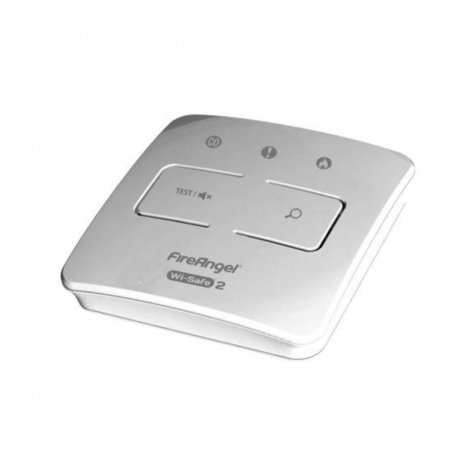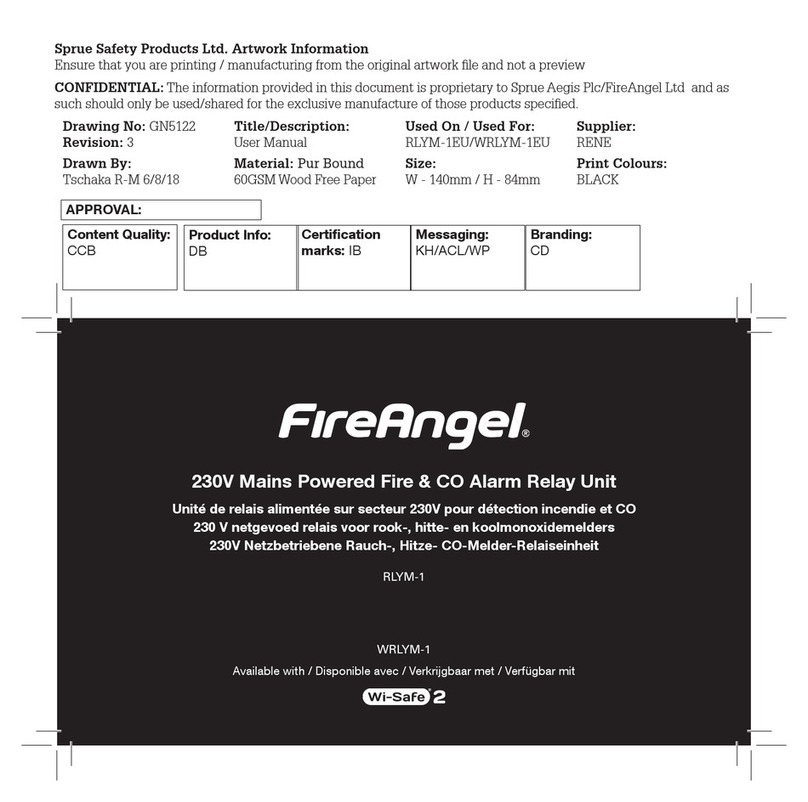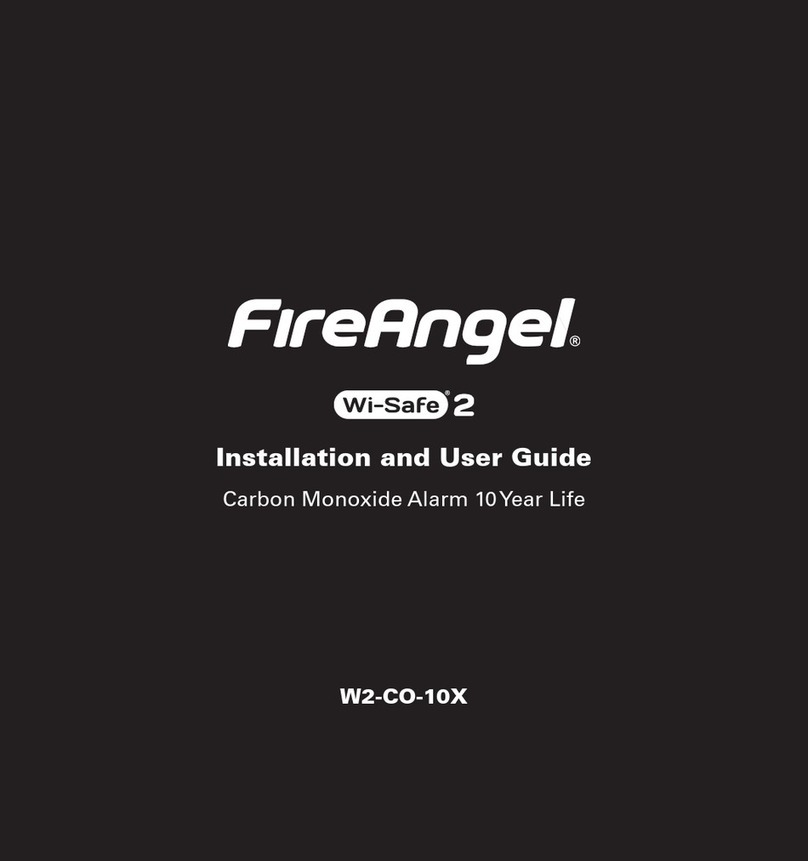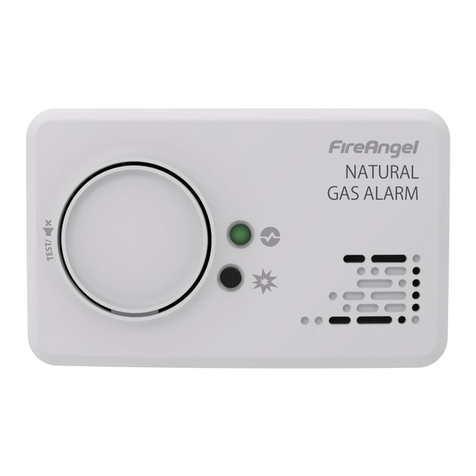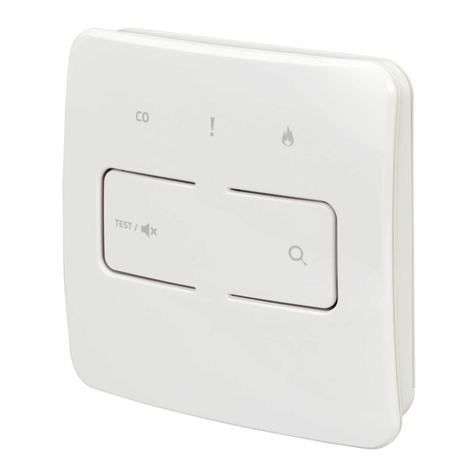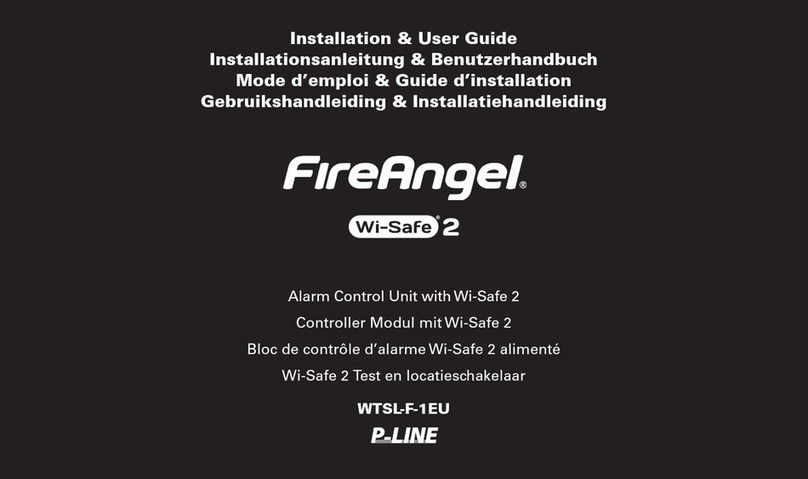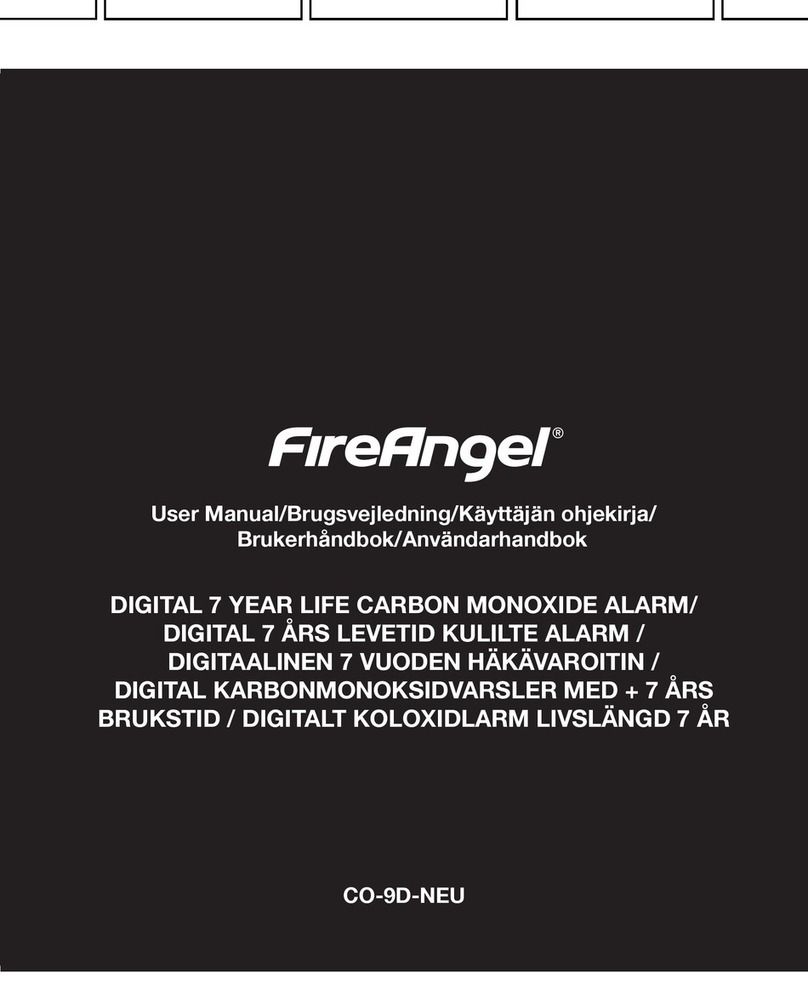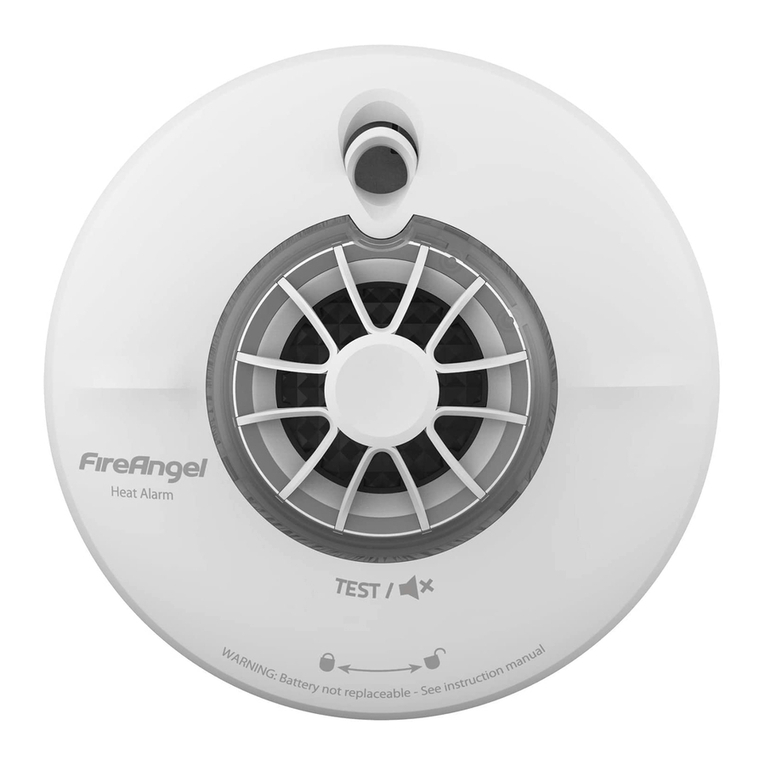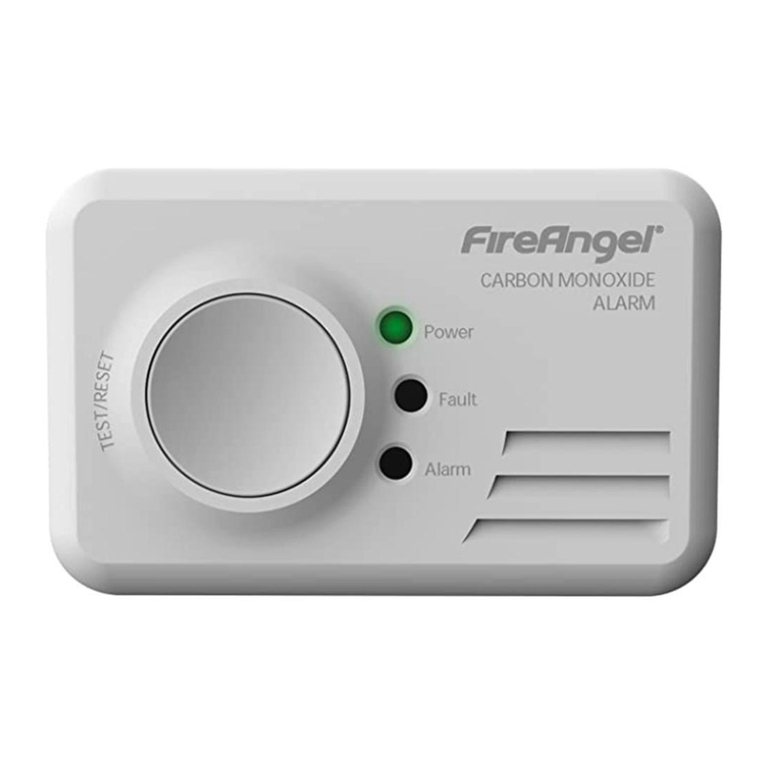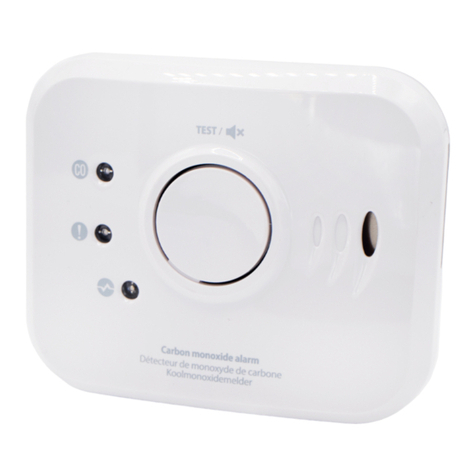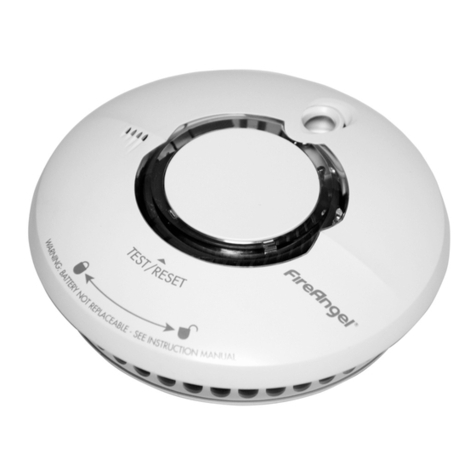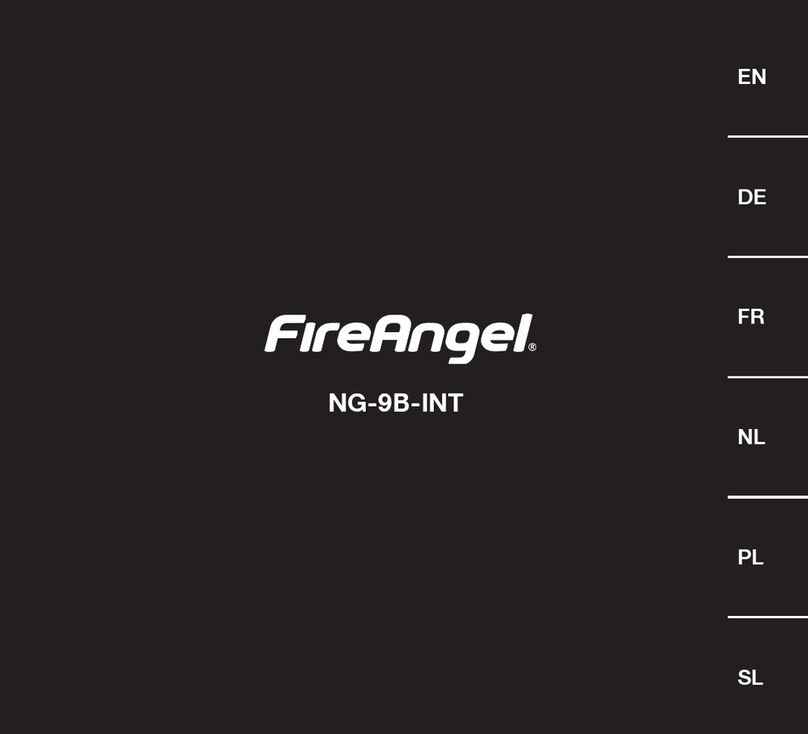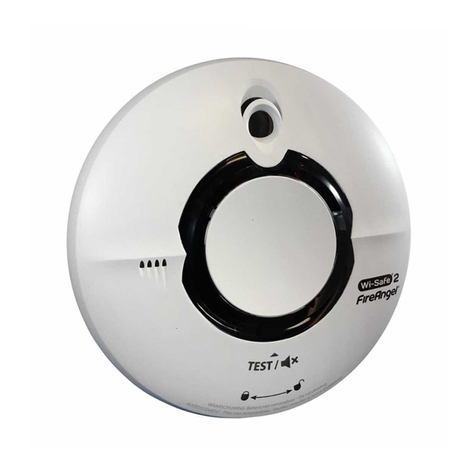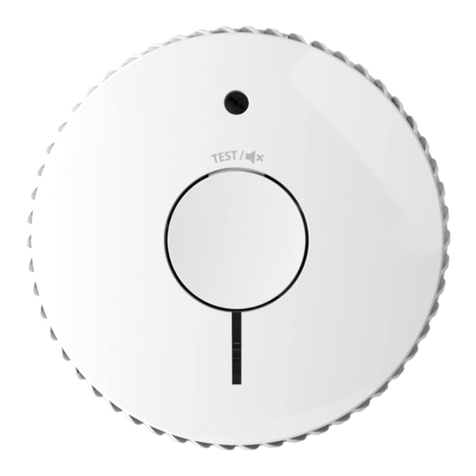
6 7
EN
HARDWARE INSTALLATION
The alarm base plate is designed to be permanently mounted, using its own built-in terminal block to
connect it to the mains. The base plate can be screwed directly to the ceiling.
• IMPORTANT: The circuit used to Power the alarm must be a 24 hour voltage circuit that cannot be
turned off by a switch. In accordance with BS 5839: Part 6, we recommend: For mains powered alarms,
each with an integral standby supply, the mains electricity supply should take the form of either a) an
independent circuit at the dwelling’s main circuit board, in which case no other electrical equipment
should be connected to this circuit (other than a dedicated monitoring device installed to indicate failure
of the mains electricity supply to the alarms); or b) a separately electrically protected, regularly used local
lighting circuit. Check with local building and re regulations for your property, to ensure compliance.
• Ensure a permanent connection to the xed wiring of the building is made in a suitable junction box.
• Remove the terminal block cover.
• If trunking is required, snap the break-out tab away from the base plate prior to connection.
• The wiring must be connected to the terminal block as follows:
Live (L) - Connect to the Live in the house wiring.
Neutral (N) - Connect to the Neutral in the house wiring.
Interconnect (I) - If desired, join the Interconnect wire between the alarms.
• Use the terminal to safely terminate any copper Earth or green / amber cable.
WARNING: Mixing the Live and Neutral
connections when interconnecting alarms will
damage all the alarms. DO NOT use the Earth wire
for the interconnect connection.
Neutral (N)
Interconnect (I)
Live (L)
Earth
Trunking
break-out tab
Either feed the wire through the hole in the base
plate or through the YT2 trunking.
WARNING: Heat alarms should not be installed directly
above ovens or cooker tops. Signicant clearance
must be given to ensure heat from normal cooking is
circulated. Install your heat alarm at least 1metre away
from the cooker (see image on the left).
DO:
• Install smoke alarms in circulation areas at a distance no greater than 7.5 m from the farthest wall, no
greater than 7.5 m from a door to any room in which a re might start and no greater than 7.5 m from
the next smoke alarm.
• Install heat alarms on the ceiling, ideally in the centre of the room.
• Install sufcient alarms to compensate for closed doors and obstacles.
• Install your Thermistek heat alarm at a distance no greater than 5.3 m from the farthest wall, no
greater than 5.3 m from a door to any room in which a re might start and no greater than 5.3 m from
the next heat or smoke alarm.
DO NOT:
• Install the alarms within 1500 mm (1.5 m) of a uorescent light tting and keep wiring at least
1000 mm (1 m) from these ttings.
• Install alarms on circuits containing uorescent light ttings or dimmer switches.
• Install alarms within 300 mm (12”) of light ttings or room corners.
• Install smoke alarms in wall positions that are less than 100mm (4”) or more than 300mm (12”) away
from the ceiling.
• Locate the Thermoptek smoke alarm close to bathrooms or showers as it can be susceptible to
nuisance alarms from steam.
• Install heat alarms on a wall.
